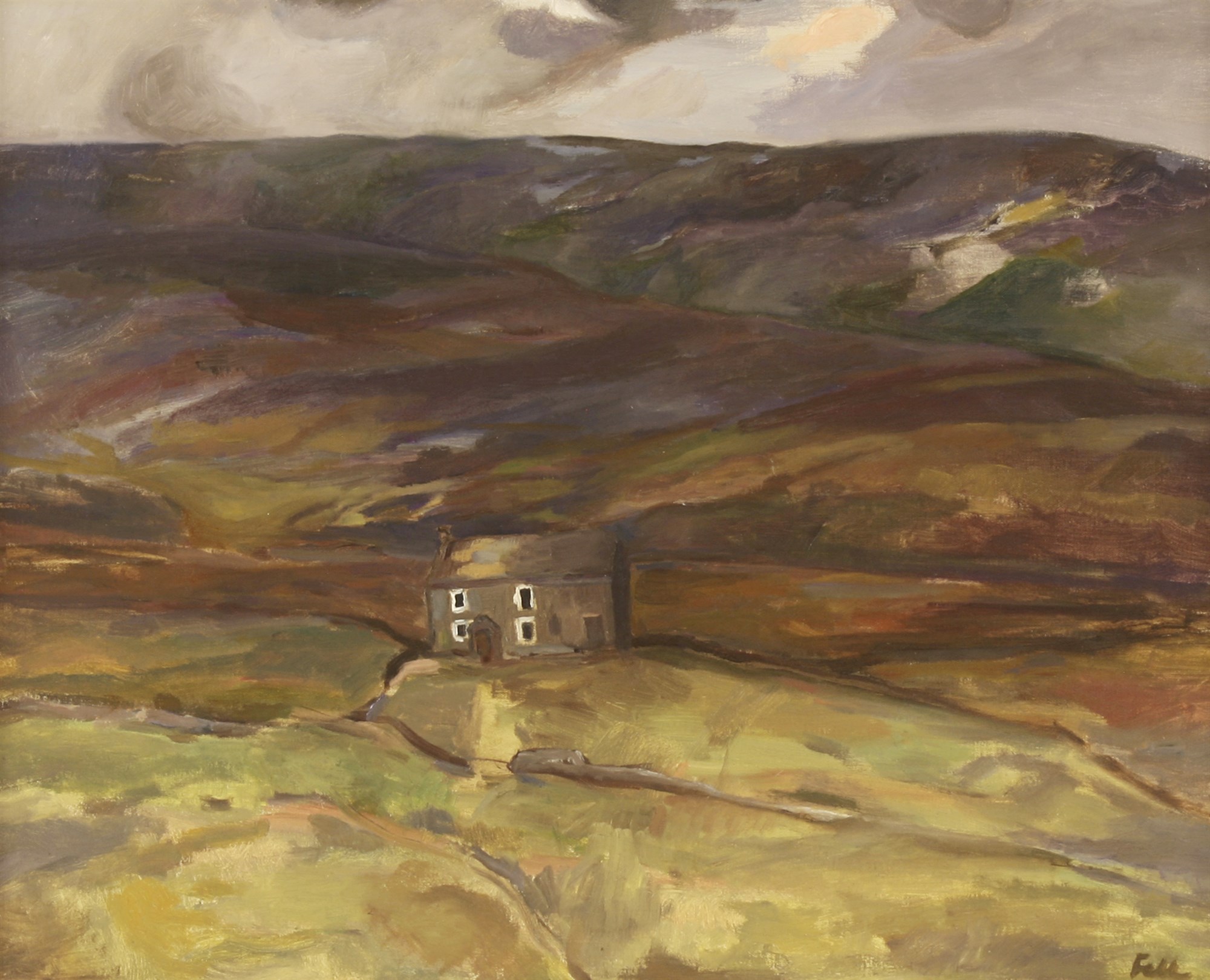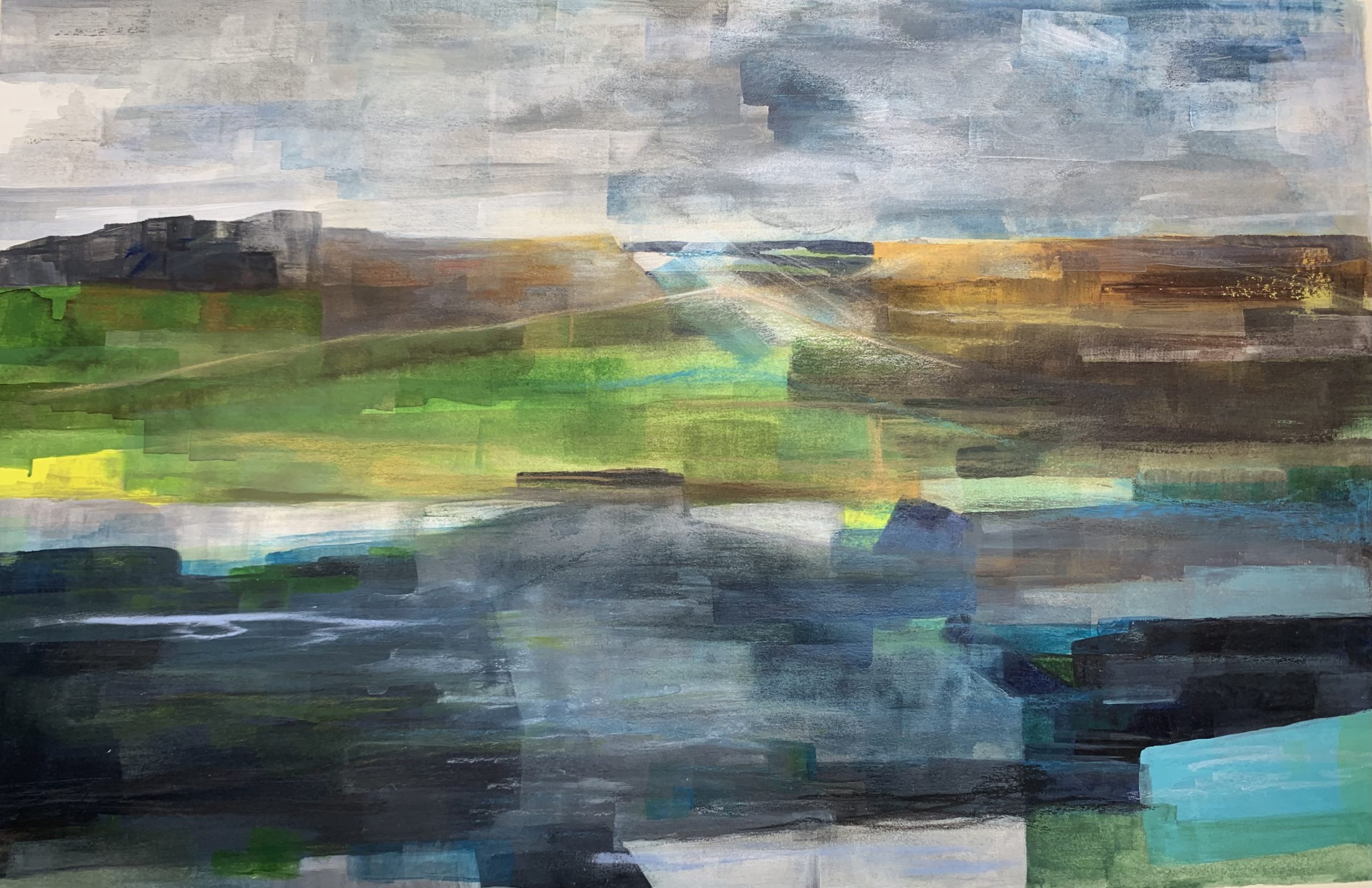During my fine art degree, the paintings I produced weren’t the daring taxidermy or Perspex creations of my peers. At this time, I was making work that featured semi-abstract florals, some more earthy than others, that featured poppies in a ploughed field. My feedback from my tutor was that ‘it looks like a dirty protest’. Those words most certainly stuck with me and made me want to run out of the studio, screaming never to touch a paintbrush again. If I am completely honest, it has taken me ten years to finally find the courage to paint again and show my work to people.
I kept drawing for myself, teaching art workshops to children and interning in Art Galleries, so I never gave up on art or the process of creating. I think that my passion for making art never left despite the discouragement. In the face of these doubts, I decided why not! As Georgia O’Keeffe said: “I’ve been absolutely terrified every moment of my life, and I’ve never let it keep me from doing a single thing that I wanted to do”.
I began tentatively, getting a feel for the paints again, practising techniques and going through many bad paintings and double sides of the paper to start finding my feet. I started painting landscapes, and I could feel a real connection to the surroundings I was painting. This idea of a sense of place, a sense of belonging and connection, had been stirring since being a curatorial assistant and working with a collection where each artist featured was influenced by the identity of place. Below is a painting by Sheila Fell, who’s work has provided so much inspiration.

Sheila Fell RA, (1931 – 1979) Yorkshire Moors (1968-70)
These initial works were much more representational, but I began to feel that I wasn’t conveying how I felt when standing in the hills or out on the moorland; I wanted to feel the weather. I began creating my first collection last year, and I haven’t looked back. I keep moving forward to discover my style and artistic goals; like most artists, these will be ever-changing.

Wild Swimming (2022)
Finding your starting point
Finding what inspires you is one of the most essential parts of creating art. When you look at artworks in books, art galleries or Instagram, what excites you about these works? When you begin to notice what attracts you to particular artists or artworks, begin to compile an inspiration board (Pinterest, art journal, cork board), and this will help you get a clear picture of the direction you want to work in.
Freedom to create
When you begin in your chosen medium, don’t be precious. It’s difficult, but knowing you are not setting out to create a masterpiece or even a finished work certainly takes the pressure off. Sketchbooks are a great way to loosen up; start with making marks on the paper, get a feel for your materials, and begin mixing colours, so you have swatches to refer to if you create something you like. Use your reference material to begin forming your work, and with each passing day, you’ll feel yourself reaching for it less as you ease into the process. The great thing about a sketchbook is that it’s entirely for you; you have the freedom to create anything.
Don’t throw anything out
When you first start making paintings, if you’re like me, you won’t be happy with every picture you make, but these are all great learning tools. You might not like the composition; it may have become murky because the paint hadn’t entirely dried before adding another layer, the colour palette might be off, or you feel you’ve played it too safe and it’s just not hitting the mark. As you can probably tell from this list, I have faced these problems and many more, but you certainly learn from every painting you make.
So is it too late to become an artist? Never! Some of my mistakes have led me to find a much more creative approach; things don’t always go to plan, but learning to overcome the fear of making art is the only step forward.
I’d love to know what led you to take up the paintbrush again.

